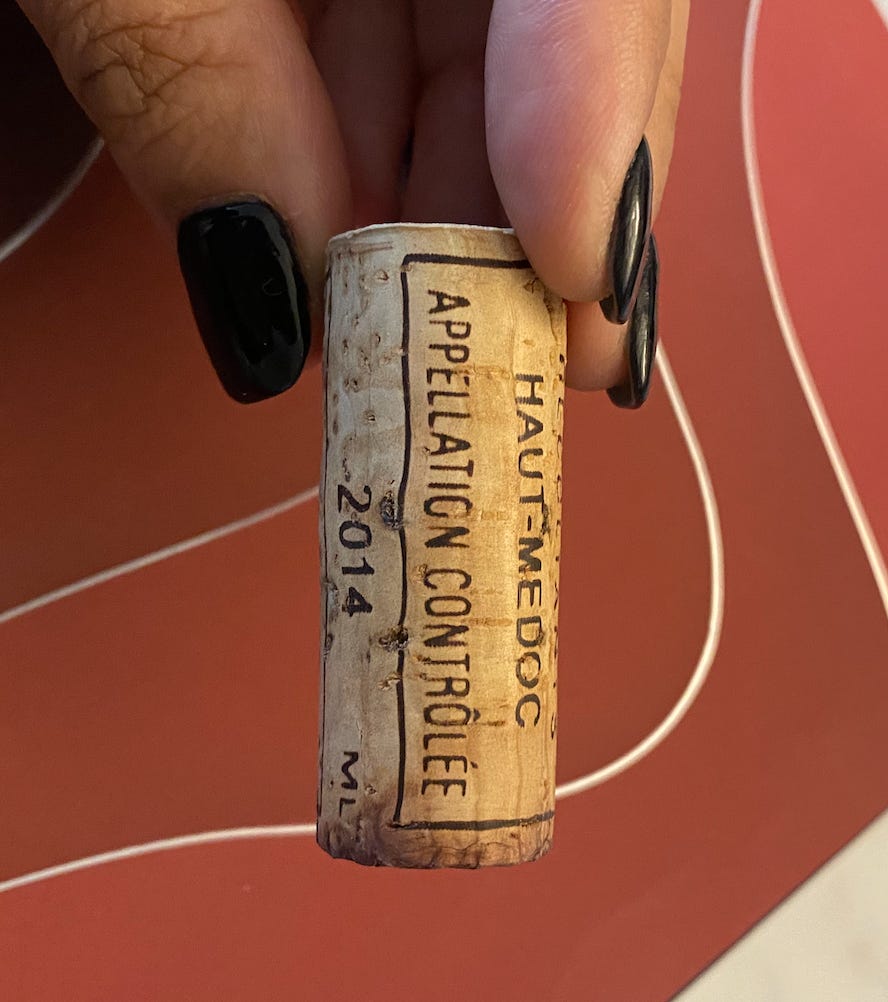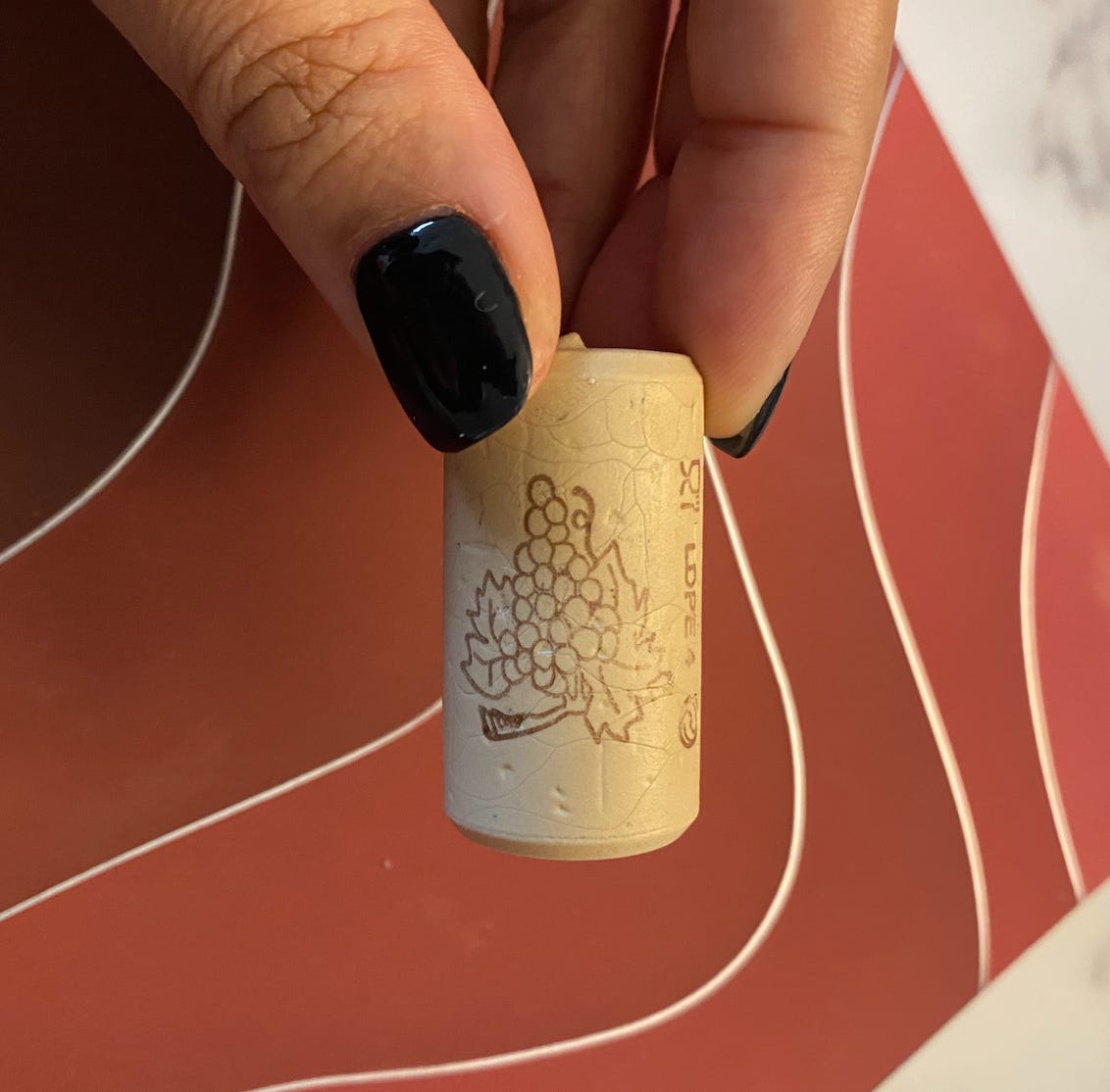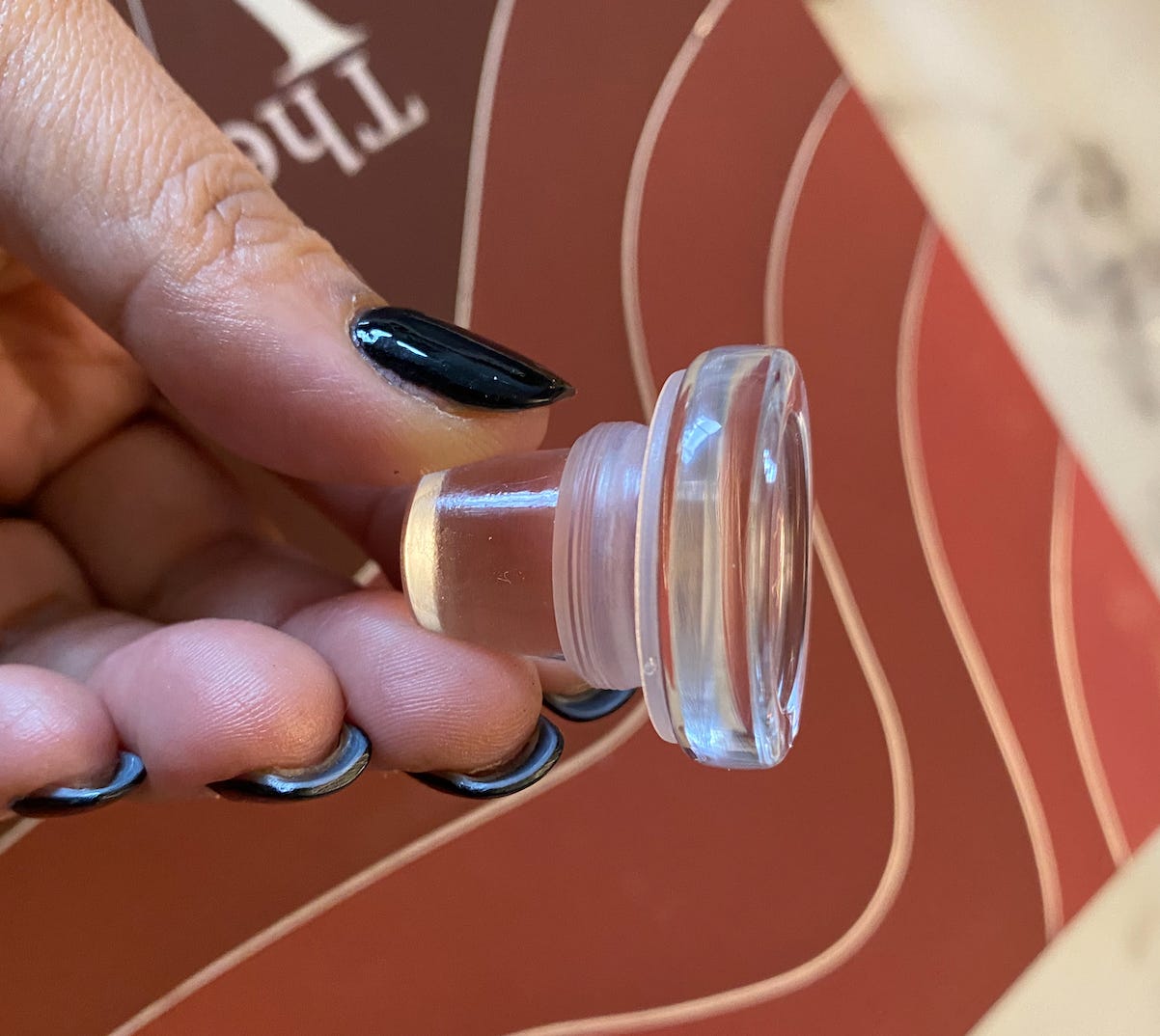Types of Wine Closures and What it means about the Wine.
Cork? Screw top? Plastic cork? Which one is better and why are we moving away from traditional cork?
Have you ever second-guessed the quality of wine based on the type of closure it has? We’ve all been there - we’ve picked up a favorite wine varietal only to see that it has a screw top closure. And you start to wonder what it says about the wine (or, goodness gracious - you!) if you drink or bring a screw top wine to a gathering. There’s a history and reason as to why we have cork closures and why the industry has expanded to a variety of other wine closures. Let’s go down the rabbit hole and also learn about the pros and cons to certain wine closures.
History of Cork Closures
Cork closures started out as a practicality. Back in the 17th century, when technology was minimal and wine only came in glass bottles, cork was the only closure that sealed the bottle well. Cork is porous, so while it keeps air out preventing it from oxidizing (and essentially going bad), it does allow tiny bits of oxygen to seep through (about one milligram a year, per Wine Folly) allowing the wine to age and transform its flavors.
Cork is a bark that comes from the cork oak tree mainly found in the Mediterranean (specifically Spain and Portugal). In the 1990s, a fungus invaded the cork oak trees in Portugal killing 20% of the population, thus increasing the chance of cork taint (aka TCA). Since it takes 25-34 years for cork oak trees to be grown and harvested the right way, the “Cork Plague” drastically cut down cork production. In response, wine makers have started seeking alternatives to cork.
Types of Wine Closures
Natural Cork
Like I mentioned earlier, natural cork creates the perfect seal for wine because its elasticity prevents oxidation but allows the wine to mature. And most wine-drinkers embrace the ritual of using a corkscrew to open a bottle of wine. Let’s be real, screwing open a bottle of wine feels quite boring. Most older vintages of wine or wines that need to be aged a bit will always come with a natural cork.

Synthetic Cork
These are not actually made from cork, but a cork look-a-like made from plastic compounds. In recent years, wine makers have been swapping out plastic synthetic corks for plant-based synthetic corks. Synthetic corks remove the chance of cork taint but still keep the ritual of removing a cork from the wine bottle. While synthetic corks are becoming popular, you’ll find more of them coming from New World producers (like California, Oregon, Argentina, etc.)

Agglomerate Cork
Also known as grainy corks (because agglomerate is hard to say), these are low-cost alternatives to natural cork. Agglomerate corks are made from the granulates that come from the production of natural cork (basically the small left-overs). With this type of closure you can probably store your wine for a maximum of two years, but no more. So varietals that have this type of closure will be Chianti Riservas, aromatic Rieslings or Sauvignon Blancs.
Screw Cap
There’s NOTHING wrong with wine that has a screw cap closure. I used to think so but I’ve learned that there are many benefits to a screw cap:
It’s guaranteed cork taint free.
There’s no chance of breaking your cork while opening.
There’s no need for a cork screw opener.
And it’s picnic and party friendly!
The first generation of screw caps were too airtight but in current years, wine producers are able to choose the amount of oxygen allowed in the bottle before adding the screw cap. Still, you probably won’t find older vintages with screw caps, so research continues around maturing wines and screw caps. There are definitely certain qualities to wine that come with a screw cap. Younger grapes that don’t need much aging will come with a screw cap closure. And Australian and New Zealand producers have adopted the screw cap for 90% of their wines produced because it eliminates the chance of cork taint. You can guarantee that a Sauvignon Blanc or a Beaujolais with a screw cap closure will be a good wine to open!
Vinolock
This new type of wine closure looks fancy! It’s made of glass, creates an airtight seal, is reusable, and environmentally friendly. However, it is costly to make and because the seal is so tight. Wines that come with vinolocks essentially do not age in the bottle. So you’ll probably find younger varietals with vinolock closures.

💭 Final Thoughts
Wine closures do not determine the quality of wine, but it does give you hints on what kind of wine it is (aged wine vs. a younger grape, for example). I encourage you to be open-minded when picking up wine with different types of closures. I always say that just because a wine is expensive doesn’t mean it’s good and just because a wine is affordable doesn't mean it’s bad. Same goes for wine closures. A screw capped wine may be just as good as a wine with a natural cork.
I hoped you learned something new today! Cheers!
Sources:
Wine Folly: Magnum Edition: The Master Guide by Madeline Puckett & Justine Hammack
The World Atlas of Wine, 8th Edition by Hugh Johnson & Jancis Robinson




